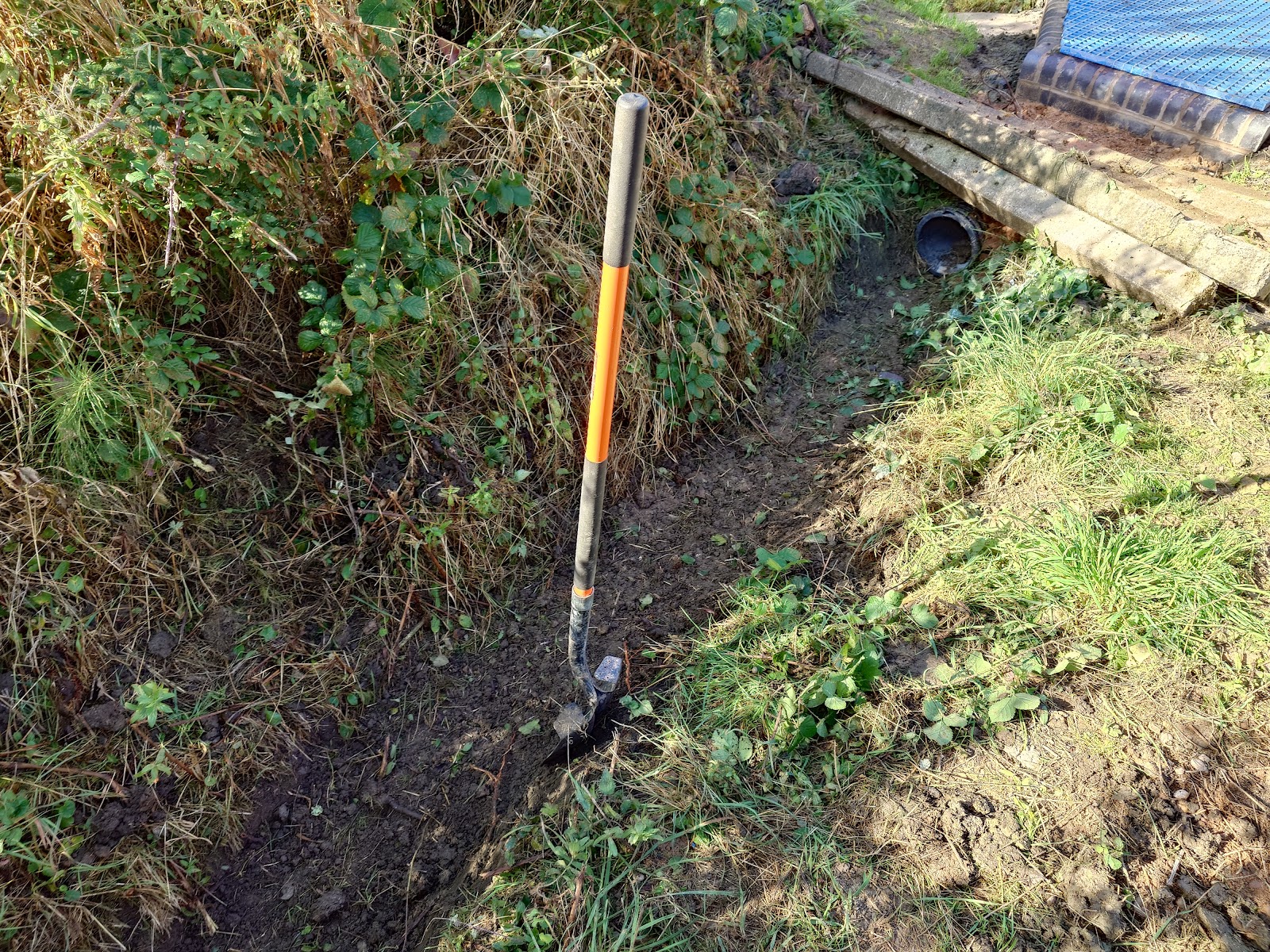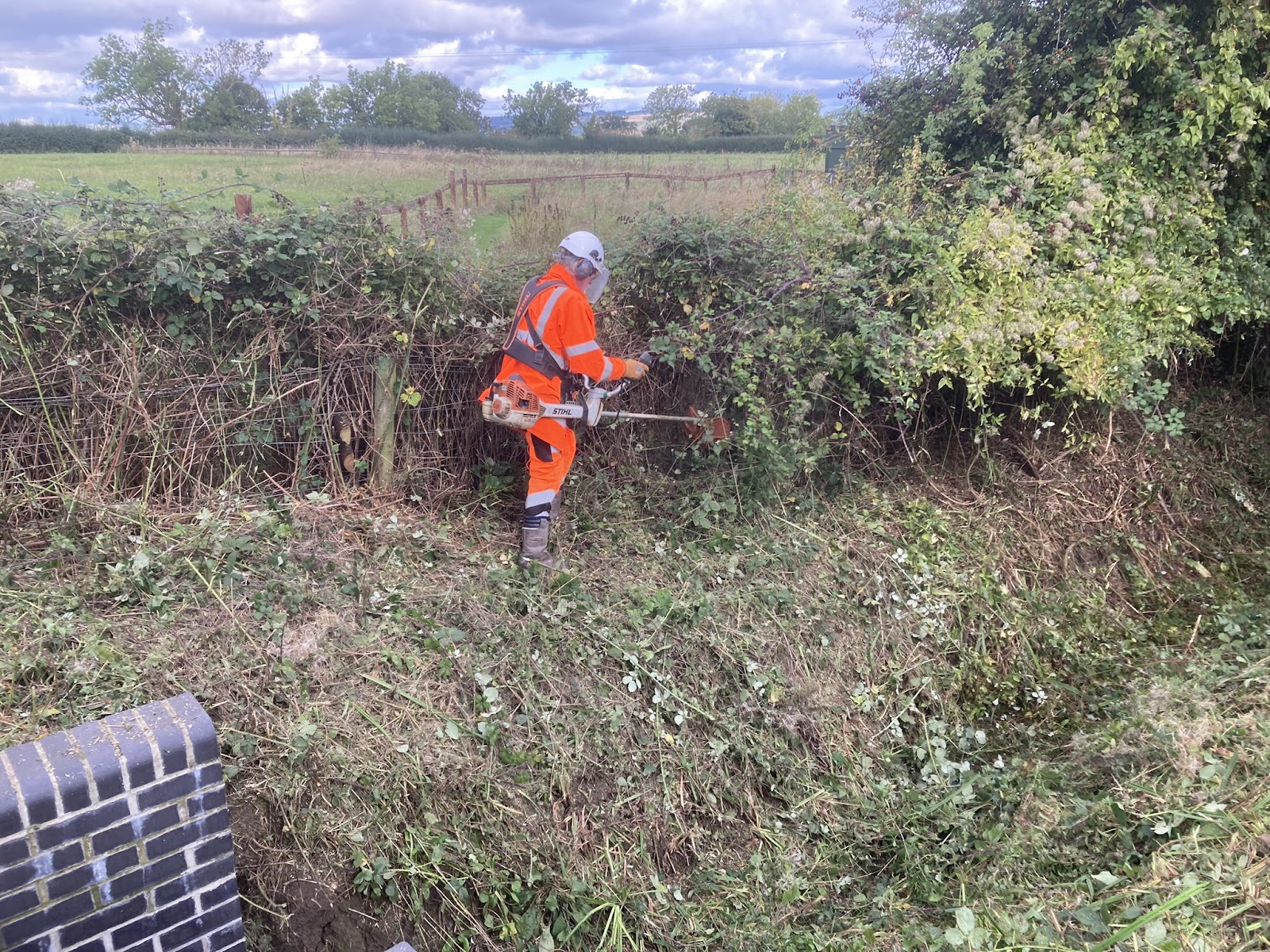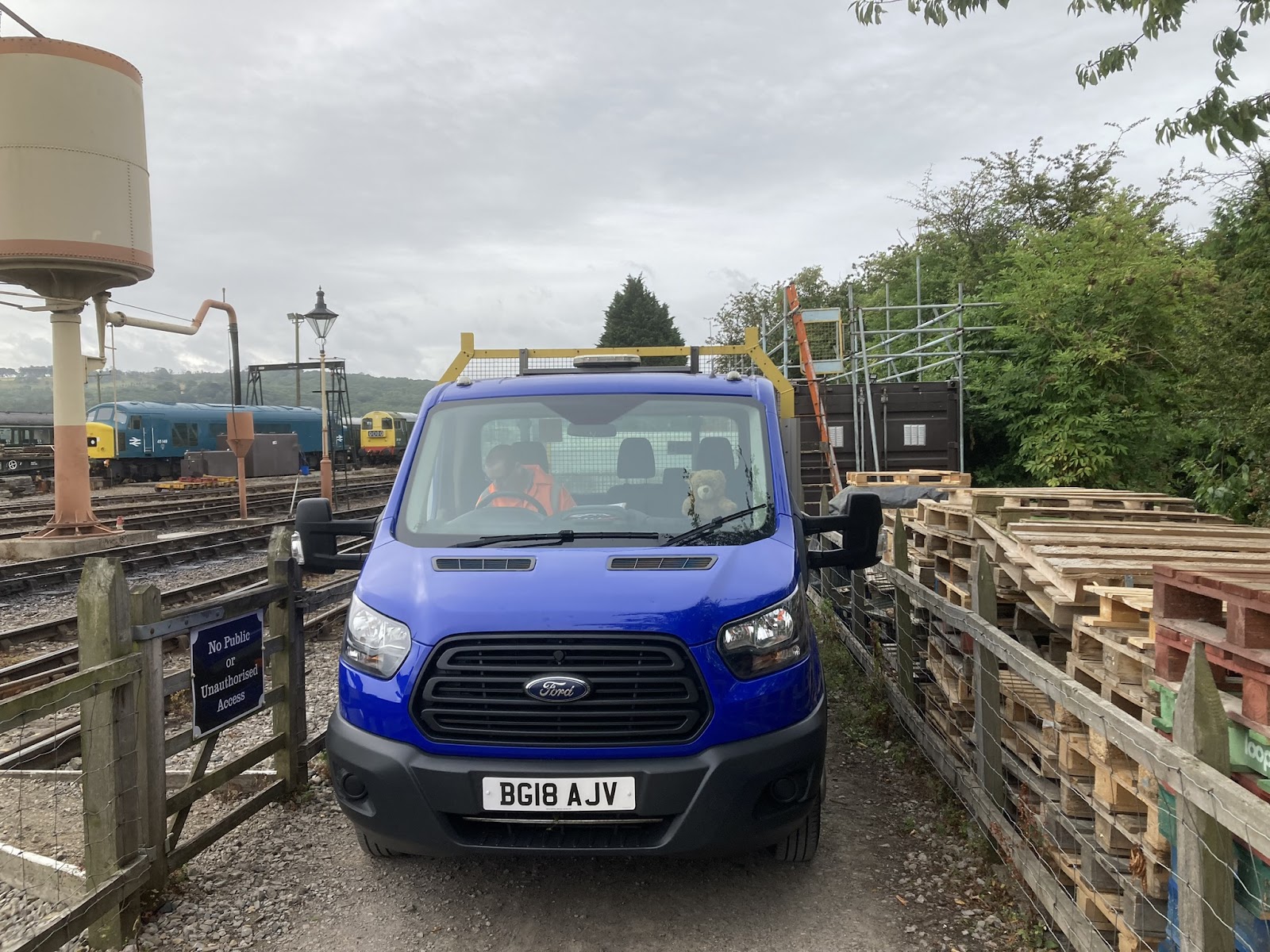The BBC Midlands television local weather forecast on Monday 23rd September highlighted Winchcombe as one of the wettest places in the region during the proceeding 48 hours. The weather station at Ford, recorded 93.8mm of rain for that Monday. That is equivalent to 135% of the average monthly rainfall for September. However, the Railway’s drainage system coped reasonably well. In a couple of places water collected, such as under Didbrook No1 bridge and in the cess by the B4632 road bridge at Stanton. But these had drained away by the Tuesday morning. So it was fortunate that a couple of weeks earlier, we had completed the improvements to the down side drainage at cross drain 11B at Stanton.
Thursday 19th September
With six of the team in attendance, the initial split was two teams of three. Jonathan, Ian and Polly took the Ranger and trailer to Stanton to collect the mini-digger. They also finished off the work at 11B inlet, this was to replace the fence in the gap used for access by the mini-digger. Also the safety rails around the chamber were given a coat of paint. Silver colour, as that was the colour of a donated spray can left over from a boat job. They met the owner of the adjoining fields, he expressed his thanks for improving the drainage. Hopefully we will not see any standing water here on either side of the line this winter. After lunch Jonathan cleaned and greased the mini-digger and began fixing the flashing lights on the dumper. Ian and Polly joined the other three at Working Lane.
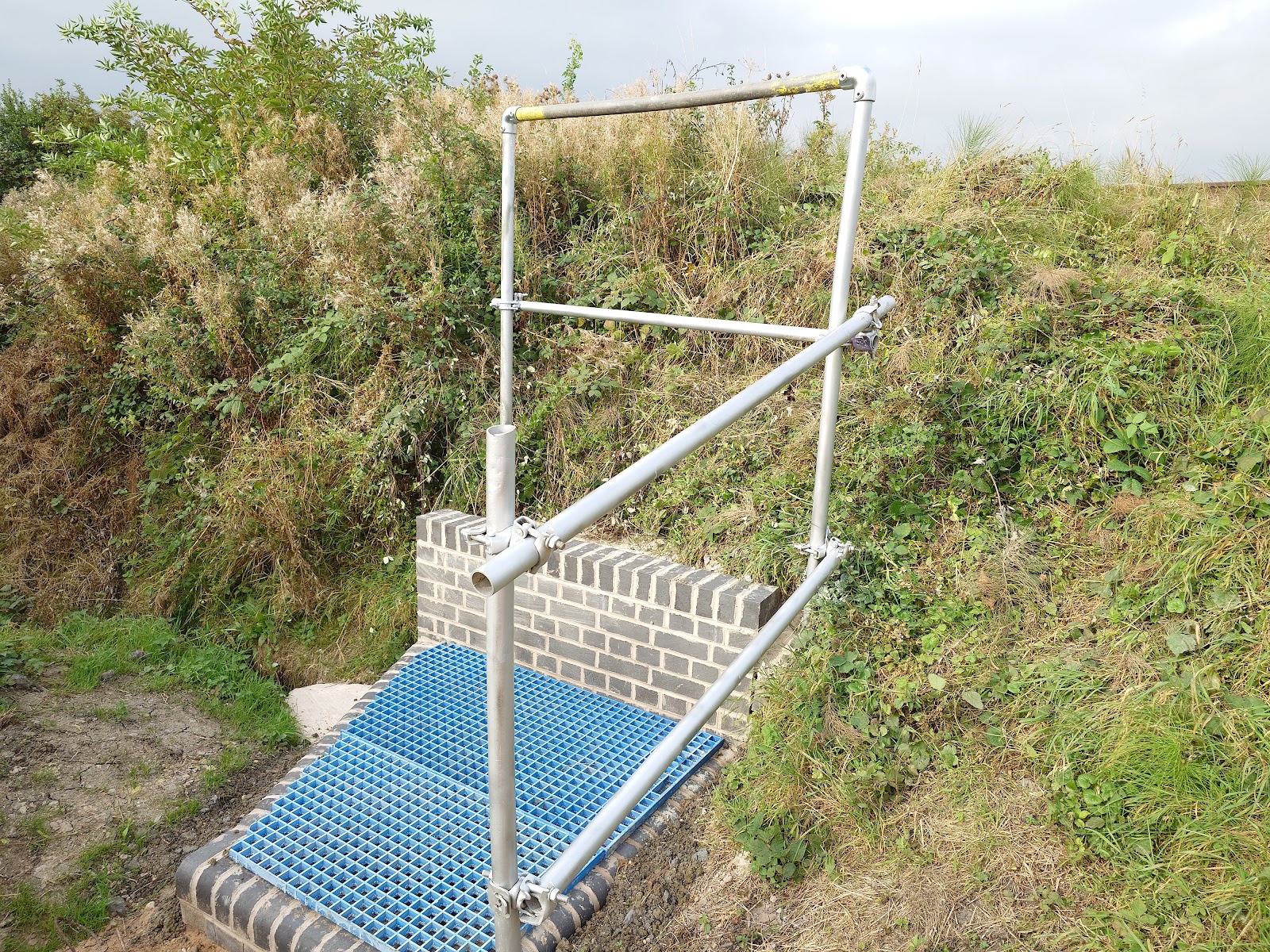 |
| The completed inlet structure of cross drain 11B. [Photo by Jonathan] |
 |
| Fence reinstated alongside the new toe ditch on the down (Cotswold) side at Stanton 11B. It did not stay dry for very long! [Photo by Jonathan] |
 |
| Mini digger on the trailer ready for the return to Winchcombe. But lunch first - the trailer makes a handy if somewhat low seat for Ian and Polly. [Photo by Jonathan] |
Stuart, Dave and Andrew first placed some warning orange tape around the services manhole next to the stabling point for the Stevie Ro-railer at Winchcombe. This has a pipe to a water tap coming out from the top; so the lid does not fit correctly. Whilst the chamber is not drainage related, a small job like this to highlight a potential safety hazard is easy to accommodate. Then it was on to Working Lane. First stop was culvert 24A; to take some initial measurements to help plan the rebuild to remove the corroded steel lid. The amount of material to excavate is approximately 4' 6" into the embankment and 5' 6" deep; so around 3.25 cubic metres. The big question is whether our mini-digger can safely cope with this excavation. (The answer is no it can not; so we will hire in a larger machine with an operator.)
Then the main task of the day - culvert/cross drain clearance and examinations. The group covered the down side of 24B and the down side of 24C before lunch. Then after lunch with the assistance of Ian and Polly, the attention was culvert 25A [the one under Working Lane bridge] and the triangle of land on the up side where the outlet of cross drain 25B comes in. Whilst the vegetation was quite tall and dense (particularly adjacent to the down side cess); it was noticeable that there was very little bramble. Also noticeable was the low flow rate of water in all the water courses - which just shows how dry the start of September was. The inspection of 25A revealed a couple of minor brickwork repairs. We will be able to sort those out next week.
 |
| Two men went to mow - Dave (top) and Ian tackle the vegetation around the inlet of culvert 24C at Working Lane. |
 |
| The brick invert of culvert 25 under Working Lane bridge, after part of the silt was removed. |
Wildlife report - most noticeable was the proliferation of thin long legged spiders in the old wooden shed at Winchcombe. Also spotted were some fungi growing in the ballast at Gretton - probably mushrooms rather than toadstools.
Monday 23rd September
Three of the team braved the torrential rain to attend a training class for maintenance and use of brush cutters and trimmers. This was at Manor Farm, Guilting Power, just over the hill from Winchcombe. Fortunately most of the class was inside a classroom or a workshop. However, the practical part had to be outside. Our new PPE kept most of the rain out, it fared much better than that which the instructor or the other class participants were wearing!
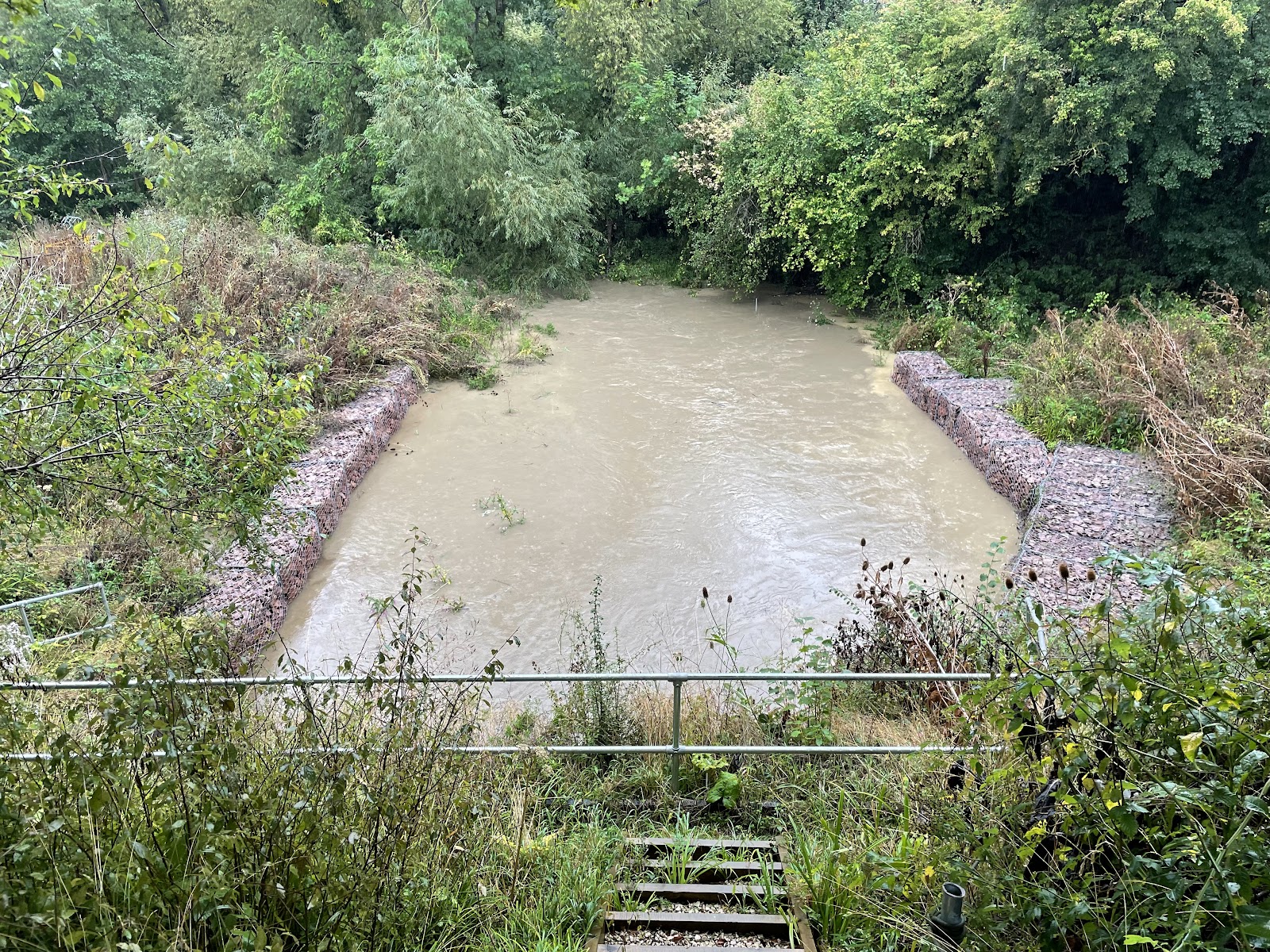 |
| River Isbourne upstream of bridge 21A at Winchcombe. [Photo by Ian Scholey] |
Thursday 26th September
A day where the weather played havoc with our plans. Although there was no rain in the morning, and just a couple of showers at lunchtime and in early afternoon, the very wet spell in the proceeding five days had an effect. We did not attempt to use our Efco self propelled flail as long wet grass clogs it up and the ground was too slippery at the top of Gretton embankment. The visual inspection of cross drain 25B was impossible because the outlet headwall was invisible as the water level too high as it was backing up in the adjoining field.
Six of the team were in for the full day, with one more joining at lunchtime.
First off two of the team completed their PTS re-examination; Jonathan fixed the flashing beacons on the dumper; and the other three prepared the just delivered new brush cutters and carried out some servicing on a couple of others. Then all six headed to Working Lane.
 |
| One of the new brushcutters ready for action. It won't look so pristine by the end of the winter! |
Polly and Jonathan attended to brickwork repairs on culvert 25A we had noted last week. Amazing that we had a task that was on the 'to do' list for only 7 days! Despite the level of the water, they also managed to remove most of the silt and gravel from the brick invert under bridge 25. Dave and Martin baptised the new brushcutters by clearing the access along the up side boundary from Working Lane to the outlet of cross drain 25B. Roger and Andrew cleared around the cess chambers between the top of the haul road and Greet tunnel. They also removed a lot of debris from the outlet ditch of culvert 24C - quite amazing what gets washed in with one week of heavy rain. This time the surprise was a large aluminum cooking saucepan.
 |
| Mortar repair on the join between the original invert of 25A and the newer headwall for the pipe to the 25A/25B junction. |
 |
| Outlet of cross drain 25B - there is a headwall underneath the water (honest!). |
 |
| Whilst at 25C the water level was just below the top of the bore. |
Ian joined at lunchtime, so the afternoon saw four completing the clearance of the triangle of land over the 25A/25B outlet junction. The also removed some more of the overhanging vegetation on the haul road. The other three cleared and inspected the up side outlet of cross drain 24C (the down side inlet is outside of railway land and under the garden of a house in Barn Close). Finding and then clearing the access down the embankment was a challenge — it is very obvious that this wet spring/summer/early autumn has resulted in significantly more vegetation growth.
 |
| Viewed from bridge 25, the up side at Working Lane is much neater with the vegetation cut. Plus it looks almost like summer - but that only lasted less than an hour. |





